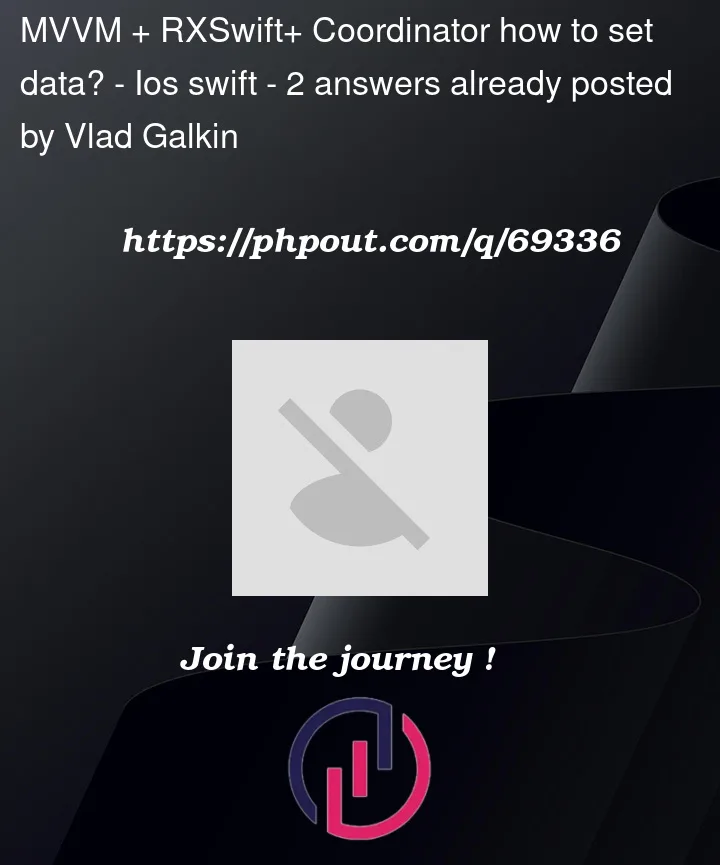Good night!
Can you tell me how can I write data from controller 2 to controller 1?
I have a coordinate at the main screen.
final class MenuCoffeLikeCoordinator: TabBarPresentableCoordinator {
var tabBarItem: UITabBarItem = {
let title = "Меню"
let image = UIImage(asset: Resources.Assets.TabBarItems.mainTabBar)
let selectedImage = UIImage(asset: Resources.Assets.TabBarItems.mainTabBarSelected)
let item = UITabBarItem(title: title, image: image, selectedImage: selectedImage)
return item
}()
var navigationController: UINavigationController
init(navigationController: UINavigationController = UINavigationController()) {
self.navigationController = navigationController
}
var didFinish: (() -> Void)?
func start() {
self.navigationController.pushViewController(createMenuCoffeLikeFlow(), animated: true)
}
func stop() {}
func createMenuCoffeLikeFlow() { -> UIViewController {
let menuController = MenuCoffeLikeAssembler.createModule()
menuController.rx.didTapMapLayer.onNext {
let controller = self.createCoffeeBarMap()
self.navigationController.pushViewController(controller, animated: true)
}
return menuController
}
private func createCoffeeBarMap() -> UIViewController {
let controller = CoffeeBarContainerAssembler.createModule()
controller.obsRelay.subscribe(onNext: { event in
self.navigationController.popViewController(animated: true)
})
return controller
}
}
In the createMenuCoffeLikeFlow function, I create the main screen, and when I click on the button, I go to screen 2 (createCoffeeBarMap)
Inside the function (createCoffeeBarMap), I subscribe to the PublishSubject, and when the data changes, I get a new text.
I need to write this text in the menuCoffeeControler which is in the createMenuCoffeLikeFlow function. How can i do this?




2
Answers
Here’s how I would implement it using my Cause Logic Effect (CLE) architecture. With CLE you don’t need to implement a Coordinator because a reusable Coordinator class already exists in the library. This means less code for you to write.
Unlike yours, this sample is complete and will compile. The only thing missing is the creation and layout of the views inside the view controllers.
Like I said above, this uses a reusable Coordinator class that is part of the library instead of you having to write your own all the time. This architecture will significantly reduce the amount of boilerplate code you have to write. Learn more at https://github.com/danielt1263/CLE-Architecture-Tools and join the RxSwift Slack to learn more about RxSwift in general.
this is a typical scenario where DI comes to rescue. You have to have some kind of a shared container which will
registerandresolvedependencies. I useDiphttps://github.com/AliSoftware/Dip.git and here is an example with your code. The idea is the following – you register closure in one VC and pass it to another.